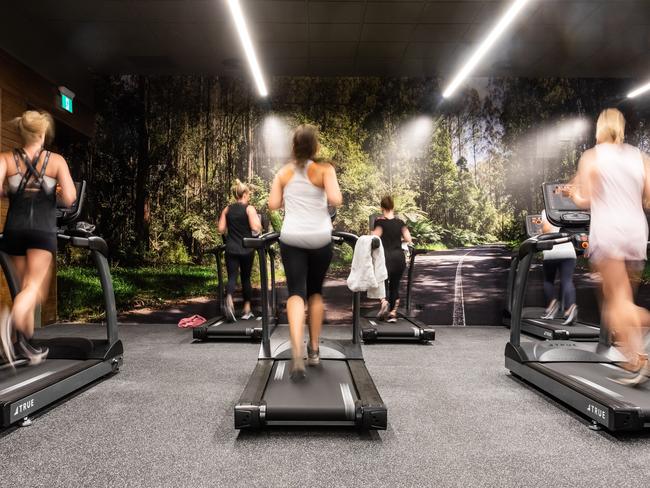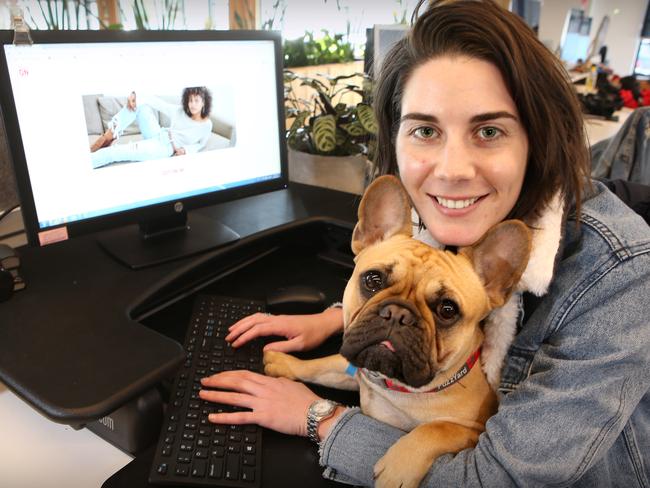Crazy ‘carrots and sticks’ to get workers back to office: Amazing perks of some companies revealed
Employers are trying to lure workers out of their homes and back into offices with astonishing incentives, including a week’s extra paid annual leave, if they come in full time.
Victoria
Don't miss out on the headlines from Victoria. Followed categories will be added to My News.
Employers are upping the ante on incentives aimed at luring workers back into the office with tempting offerings including extra holidays, bonus pay and even pet or child care.
But a workplace expert has warned the costly perks are unlikely to achieve the desired result of more bottoms on office chairs, in many cases.
Associate Professor John Hopkins from Swinburne’s School of Business, Law and Entrepreneurship told the Herald Sun despite the “carrots” being dangled before workers to encourage them back into the office — and even “sticks” of return to office mandates in some workplaces — the reality was “the need to physically be in an office to work” would continue to reduce, as technology advanced.

“I think this trend isn’t going to go away … I don’t see a full time return to office anytime soon for most organisations,” he said.
It comes as major digital investment platform Stake offers Australian employees extra holidays, if they spend all their working week in the office.
Global Head of People at Stake, Aline Van Koninckxloo, told the Herald Sun the company asked workers to come into the office for a minimum of three days a week, but if they came in on the extra two days, they could earn an additional seven days of leave per year — which had been labelled “offset days”.
“Since implementing this, we’ve seen a significant increase in the number of people attending the office on non-mandatory days with a noticeable boost in team cohesion. As more people attend the office, this has a snowball effect that encourages others to follow suit,” she said.
Ms Van Koninckxloo said that when designing a benefits program, and encouraging people into the office, it was important for companies to understand what their employees truly valued.
“Rather than quick wins like free breakfasts, people place the most value on incentives that have a long-term impact, such as the ability to spend more time with family and support in growing their careers,” she said.
“While it’s important to be intentional with employee benefits, it’s essential to incorporate choice too. We wanted to strike the right balance between flexibility and maintaining our office culture, yet our internal surveys found that while people enjoy some office time, commuting can be a burden — particularly when it impacts precious family time.”
And the offset days scheme is not all the company offers, as a kingsize carrot for employees to join, and stay with, the firm.
A recent job advertisement for a customer insights chief with Stake also promises a suite of “perks”, including a $2,500 a year professional development allowance, $1000 a year wellbeing allowance, up to 16 weeks paid parental leave, a childcare allowance of up to $18,000 in value over 24 months, “extra paid leave during tough times”, discretionary performance and talent referral bonuses and the option to purchase shares in the company.
At U.S. based tech company Compt, the cost of pet care is even subsidised for workers who come into the office.
“Rates of pet ownership soared during the pandemic. By providing a pet care stipend, pet owners can hire support to ensure their pets receive the care they need while they are in the office,” it explains.

At the Geelong based headquarters of retail giant Cotton On, employees in the “world class office” are rewarded with access to “a state-of-the-art wellness centre” with spa therapists, holistic health experts and free fitness classes — including reformer pilates classes, personal training sessions, yoga studio, spin room and run club — and access to an onsite childcare centre, with subsidised fees.
There’s also a cafe with chef-prepared meals, from which employees can purchase takeaway meals for their dinner at night, and an “onsite concierge (to) get your life sorted with dry cleaning, car wash and more”.
Dogs are welcome in the office too.
All the Cotton On employee perks — many of which existed pre-pandemic — are in addition to the 50 per cent off products across all the company’s brands, for employees and their families and friends.
While Cotton On’s many perks are a longstanding feature of the company’s culture, many other Victorian businesses have had to think and adapt fast to make their workplace an inviting one to spend time in, and preferable to the home office.
But Assoc Prof Hopkins said even the most tempting of offerings or punitive of measures likely wouldn’t be successful in bringing some workers back to their offices, if they firmly believed they could do their jobs just as well, or better, working remotely.
Return to office mandates had caused backlash in some cases and the “stick” approach of linking office attendance to pay, bonuses and even promotions did not always achieve the company’s desired outcome, he said.


A case in point was the United Kingdom’s Office for National Statistics (ONS), where staff had recently voted to strike in protest at plans requiring them to be in the office for at least 40 per cent of the working week, he said.
In Victoria, some workers had made it clear they were prepared to sacrifice promotions and pay rises, for the flexibility of working from home, at least part of the week, Assoc Prof Hopkins said.
“Some workers I’ve spoken to have said they would prefer to have their flexibility over a pay rise, after they looked at the renumeration of what was promised versus the cost of going into the office … I think bringing workers into the office against their will is not going to have a positive impact on culture,” he said, adding it was improved workplace culture employers said they were trying to boost by bringing workers back.
“I think what upsets employees is when they need to come to the office because they’re required to be there a set number of days, but doing things they could have easily done at home. They’re sitting in Zoom calls and the like, after they’ve spent an hour or more of their time commuting, at a financial cost, and they just don’t see the logic in it.
“They don’t see the purpose in being there (in the office) to do those work activities that they can do from home.”
Assoc Prof Hopkins said investment in expensive property for company headquarters was also an issue for many organisations.
“I think a lot of senior leaders are certainly psychologically and financially invested in the corporate real estate … they’ve tied themselves to a long-term lease, and they feel as if they need to get value from that lease. So definitely, I think that is a factor,” he said.
Research into the return to office mandates of Australian organisations had shown “there was no increase and in many cases a downturn” in performance and subsequently share prices, after workers had been forced back into the office, Assoc Prof Hopkins said.
“So there’s no evidence that return to office mandates actually get people back in and if, after getting people back in, that it leads to really positive outcomes for the company,” he said.
Assoc Prof Hopkins said employers needed “to take a step back” and ask themselves why they were so insistent on workers returning to the office full time.
“They need to ask … why aren’t the employees in the office as often as they like, what is it that’s stopping them coming there? And then what can they offer to make the office more attractive now — it’s the carrot versus stick … and (linking) attendance to things like promotions and pay rises is definitely the stick approach,” he said.
“I think every organisation is going to be different and they need to look at the type of work that happens at their organisation and at what the preferences are of the people who are doing that work. And then they need to design a model around how that work will work.”




